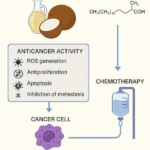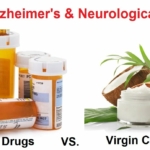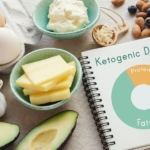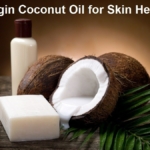by Sean Carson
You’ve joined an army of thousands committed to being all you can be. You rise at dawn to pound the pavement, or climb the Stairmaster to heavenly buttocks, while listening to Deepak Chopra on your Walkman. Or, maybe you contort yourself into yoga asanas in rooms hotter than a Korean chutney. You drink only purified water as you toss a handful of the latest longevity pills into your mouth. You’re hungry, hungry for health, and no doubt about it, you’re no stranger to soy.
Faster than you can say “isoflavone,” the humble soybean has insinuated itself into a dominant position in the standard American diet. And that shouldn’t be a surprise. Cheap, versatile, and karma-free, soy in the 1990s went from obscurity as vegan-and-hippie staple to Time magazine. With mad cows lurking between whole wheat buns, and a growing distrust of conventionally-produced dairy products, soy seemed like the ideal choice, the perfect protein.
But like all seemingly perfect things, a shadow lurked. By the final years of the last decade, a number of soy researchers began to cry foul. Soy Good? Soy Bad?
As the soy industry lobbied the FDA for a cardiovascular health claim for soy protein, two senior FDA scientists, Daniel Sheehan and Daniel Doerge – both specialists in estrogen research – wrote a letter vigorously opposing such a claim. In fact, they suggested a warning might be more appropriate. Their concern? Two isoflavones found in soy, genistein and daidzen, the same two promoted by the industry for everything from menopause relief to cancer protection, were said to “demonstrate toxicity in estrogen sensitive tissues and in the thyroid.” Moreover, “adverse effects in humans occur in several tissues and, apparently, by several distinct mechanisms.” Sheehan also quoted a landmark study (Cassidy, et al. 1994), showing that as little as 45 mg of isoflavones could alter the length of a pre-menopausal woman’s menstrual cycle. The scientists were particularly concerned about the effects of these two plant estrogens on fetuses and young infants, because “development is recognized as the most sensitive life stage for estrogen toxicity.”
It wasn’t the first time scientists found problems with soy, but coupled with a Hawaiian study by Dr. Lon White on men, the controversy ended up on national television. While industry scientists criticized both the White study and the two FDA researchers (who are now disallowed from commenting publicly on the issue), other researchers weighed in on the anti-soy side. The tofu’d fight had begun.
What about Asia?
One of the favorite mantras of soy advocates is that the ubiquitous bean has been used “safely by Asians for thousands of years.” With many soy “experts” (often with ties to the soy industry) recommending more than 250 grams of soy foods – and in some cases, more than 100 mg of isoflavones each day – it’s easy to get the impression that soy plays a major role in the Asian diet. If you saw it on TV or read it in a magazine, it must be true, right? Well, not exactly.
Sally Fallon, president of the Weston A. Price Foundation (www.westonaprice.org) and author of Nourishing Traditions, responds that the soy industry and media have spun a self-serving version of the traditional use of soy in Asia. “The tradition with soy is that it was fermented for a long time, from six months to three years and then eaten as a condiment, not as a replacement for animal foods,” she says.
Fallon states that the so-called Asian diet – far from centering around soy – is based on meat. Approximately 65% of Japanese calorie intake comes from fish in Japan, while in China the same percentage comes from pork. “They’re not using a lot of soy in Asia – an average of 2 teaspoons a day in China and up to a quarter cup in some parts of Japan, but not a huge amount.”
Contrast that with modern America, home of “if a little is good for you, more must be better.” Walk into any grocery store, especially the health-oriented variety, and you’ll find the ever-present soybean. My recent, limited survey of Marin food stores found soy in dozens and dozens of items: granola, vegetarian chili, a vast sundry of imitation animal foods, pasta, most protein powders and “power” bars, and even something called “nature’s burger,” which given the kind of elaborate (and often toxic) processing that goes into making soy isolate and TVP, would make Mother Nature wince. There’s even a bread – directly marketed to women – containing more than 80 mg of soy isoflavones per serving, which is more than the daily dose in purified isoflavone supplements. All of this, in addition to the traditional soy fare of tempeh, tofu, miso, and soy sauce. It’s no wonder that Californians are edamame dreaming.
So, while Asians were using limited to moderate amounts of painstakingly prepared soy foods – the alleged benefits of which are still controversial – Americans, especially vegetarians, are consuming more soy products and isoflavones than any culture in human history, and as one researcher put it, “entering a great unknown.”
Oddly, nowhere in industry promotion does anyone differentiate between traditional, painstakingly prepared “Asian” soy foods and the modern, processed items that Fallon calls “imitation food.” And therein lies the rub. Modern soy protein foods in no way resemble the traditional Asian soy foods, and may contain carcinogens like nitrates, lysinoalanine, as well as a number of anti-nutrients which are only significantly degraded by fermentation or other traditional processing.
“People need to realize that when they’re eating these soy foods – and I’m not talking about miso or tofu – but soy ‘burgers,’ soy ‘cheese,’ soy ‘ice cream,’ and all of this stuff, that they are not the real thing. They may look like the real thing and they may taste like the real thing, but they do not have the life supporting qualities of real foods,” Fallon says.
There’s No Business Like Soy Business
“The reason there’s so much soy in America is because they started to plant soy to extract the oil from it and soy oil became a very large industry,” says lipid specialist and nutritionist Mary Enig, Ph.D. “Once they had as much oil as they did in the food supply they had a lot of soy protein residue left over, and since they can’t feed it to animals, except in small amounts, they had to find another market.”
According to Enig, female pigs can only ingest it in amounts approximating 1% during their gestational phase and a few percent greater during their lactation diet, or else face reproduction damage and developmental problems in the piglets. “It can be used for chickens, but it really has limitations. So, if you can’t feed it to animals, than you find gullible human beings, and you develop a health claim, and you feed it to them.”
In a co-written article, Enig and Fallon state that soybean producers pay a mandatory assessment of ½ to 1 percent of the net market price of soybeans to help fund programs to “strengthen the position of soybeans in the marketplace and maintain and expand foreign markets for uses for soybeans and soy products.”
They also cite advertising figures – multi-million dollar figures – that soy-oriented companies like Archer Daniels Midland or ADM spend for spots on national television. Money is also used to fund PR campaigns, favorable articles, and lobbying interests. A relaxation of USDA rules has lead to an increase in soy use in school lunches. Far from being the “humble” or “simple” soybean, soy is now big business – very big business. This is not your father’s soybean.
There’s been such a rush to market isoflavones that the before-mentioned multinational corporation, ADM, in 1998, petitioned the FDA for GRAS (generally recognized as safe) status for soy isoflavones. For those who don’t know GRAS, the designation is used for foods, and in some case, food additives, that have been used safely for many years by humans. For those who didn’t know – like a number of protesting scientists – that soy isoflavones had been widely used by generations of Americans before the late 1950s, it was a revelation indeed. Ahem.
Dr. Sheehan, in his 1998 letter to the FDA referenced earlier, states “that soy protein foods are GRAS is in conflict with the recent return by CFSAN to Archer Daniels Midland of a petition for GRAS status for soy protein because of deficiencies in reporting the adverse effects in the petition. Thus GRAS status has not been granted.” And what about those safety issues?
Requiem for a Thyroid
One of the biggest concerns about high intake of soy isoflavones is their clearly defined toxic effect on the thyroid gland. You don’t have work too hard to convince Dr. Larrian Gillespie of that. Dr. Gillespie, author of The Menopause Diet, in the name of scientific empiricism, decided to run her own soy experiment – on herself. She notes that she fits the demographic soy isoflavones are most marketed to: borderline hypothyroid, menopausal females.
“I did it in two different ways. I tried the (isoflavone) supplements (at 40 mg), where I went into flagrant hypothryoidism within 72 hours, and I did the ‘eat lots of tofu category,’ and it did the same thing, but it took me five days with that. I knew what I was doing but it still took me another 7-10 days to come out of it.”
In the current issue of the Whole Earth Review, herbalist Susan Weed tells the story of Michael Moore – no, not that Michael Moore, but the founder of the Southwest School of Herbal Medicine. In an e-mail to Weed, Moore declares that “soy did me in.” Weed describes how Moore, in his own experiment, ate a large amount of manufactured soy products – protein powders, “power” bars, and soy drinks, over a period of three weeks. Weed writes that Moore ended up in a cardiac care unit because the action on his thyroid had been so pronounced.
Harvard-trained medical doctor Richard Shames, MD, a thyroid specialist who has had a longtime practice in Marin, says that “genistein is the most difficult for the metabolic processes of people with low thyroid, so when you have that present in high enough concentrations, the result is an antagonism to the function of thyroid hormone.”
Far from being an isolated problem, Shames says that recent data tags twenty million Americans being treated for thyroid problems, another thirteen million who ought to be treated if they would get a TSH (thyroid stimulating hormone) test, and another thirteen million who would show up normal on a TSH test but would test positive on another, more specific test. All in all, Shames believes that low thyroid conditions – many due to exposure to estrogen-mimicking chemicals like PCBs and DDT in environment – are the mother of most modern health epidemics.
That’s a lot of thyroid problems. Some estimate the number to be as high as one in ten. Shames says that 8 of 10 thyroid sufferers are women – often older women – like Dr. Gillespie. The same demographic the soy industry has set its targets on.
“If you’re a normal person, and one in ten are not normal, the effect [of 50 mg of soy isoflavones] may be fairly insignificant, but even a normal person can have problems at levels greater than that,” says Shames.
Dr. Gillespie says the daily amount to cause thyroid problems may be as low as 30 mg, or less than a serving of soymilk.
A number of soy proponents say the thyroid concerns are exaggerated and that if dietary iodine is sufficient, problems won’t likely happen.
Not so says Shames. “Iodine is a double-edged sword for people with thyroid problems, and for those people, more is going to increase their chance for an autoimmune reaction… throwing iodine at it is not going to be the protective solution. Shames recommends limiting soy foods to a few times a week, preferably fermented or well cooked.”
Birth Control Pills for Babies?
Environmental toxicologist Mike Fitzpatrick, Ph.D. says he doesn’t have it out for soy. His original concern was for babies. “They were getting more soy isoflavones, at least on a body weight basis, than anybody else,” he notes. “It wasn’t so much that I knew what that would do, but that I didn’t know what that would do.” Fitzpatrick, who is also Web master of Soy Online Services (www.soyonlineservice.co.nz), Web site devoted to informing people about the potential problems with soy, stresses the potential dangers for the developing human body. “Any person with any kind of understanding of environmental endocrine disrupters, compounds {like isoflavones} that are not in the body normally and can modify hormones and the way they work in the body, any expert will say that infants need to avoid these things like the plague.”
Fitzpatrick was quoted – and misquoted – world wide a few years ago when he suggested that the isoflavones in soy formula were the equivalent of birth control pills.
“When I first did my review I did compare the estrogenic equivalents of the contraceptive pill with how much soy infants and adults would be consuming,” he says. “It’s at least the equivalent of one or two estrogen pills a day, on an estrogenic basis. I’ve been criticized that it’s not the same form of estrogen, but in terms of estrogenicity, it’s a crude but valid and alarming statistic.”
The typical response by industry experts has been to downplay the uniqueness of soy isoflavones, stating – accurately – that isoflavones of ovarious kinds are prevalent in most fruits, vegetables, and legumes.
Is it Time to Toss out the Apple Sauce?
“No, you’re not going to do that because you get exposure from all kinds of things, but the exposure you get from soy is way, way higher,” Fitzpatrick says. “Soy formula is going to give babies a real whack, far in excess of what you might find in apples. Soy is a very rich source of isoflavones – that’s how the industry markets their product. You don’t see an apple extract to help women deal with menopause.”
You’ve got to wonder how the industry can market soy isoflavones as a form of estrogen replacement therapy for menopausal women (and a host of other health claims) and still claim that soy formula is safe for infants. And while the mechanism for biological activity is clearly defined, the industry keeps repeating the same tune: “no credible evidence exists.”
But credible for whom? Says Fitzpatrick: “We’re not talking about little studies here but long-term effects on infants and adults, and that’s what concerns me. It’s very trite. They (the industry) give half-baked answers. What you really need is long-term studies.” Likewise, “no credible evidence” is not good enough for Dr. Naomi Baumslag, professor of pediatrics at Georgetown University Medical School. She joined a host of others in criticizing a recent article in JAMA that was purported to be the definitive study on soy formula safety.
“It was not an acceptable epidemiological study – you can take it to any decent epidemiologist and hear what they think about it, and they use it to say that soy is safe,” says Baumslag. “It’s totally unsubstantiated.”
Manganese Madness
Besides the dangers of prematurity and other reproductive problems posed by isoflavones, Baumslag mentions the high levels of the mineral manganese (no, not magnesium) often found in soy formula. The problem of manganese is so serious that even one soy manufacturer put warning labels on its soymilk. The company’s president, in a press release, states that “there is mounting evidence of a correlation between manganese in soy milk (including soy-based infant formula) and neurotoxicity in small infants.” With manganese toxicity known for producing behavioral disorders, the press release even goes further stating, “If research continues, showing that the current epidemic levels of ADHD in children, as well as impulsivity and violence among adolescents, are connected with the increase in soy-based infant formula use our industry could suffer a serious setback by not dealing with the issue upfront.”
With all of the potential problems with soy formula, Baumslag notes that formula is also missing key immunological factors only found in mother’s milk, the lack of which could give a child a life sentence of chronic health problems. She links soy pushing to corporate profits and the PR campaigns that they fund.
“There’s been so much PR in regards to soy formula and I think you also have to ask yourself why it’s so much cheaper for them to make, which means there’s more profits. How come only 1% in the UK are on formula, where it’s closer to 30% in the United States? I don’t know why it’s so important for them to push soy, they should push breast feeding.” Perhaps its because breast milk for babies isn’t as lucrative as milking the soybean for profits.
Caveat Emptor
As a former vegan – and big soy eater – I’m disturbed by the vast array of modern, processed soy products that have come on the market in the last few years, without any recognition of potential pitfalls. Safe bet: If it hasn’t been eaten safely for thousands of years, you probably shouldn’t put it at the center of your diet. We’ve been sold a bill of goods that says “soy is good for you” but it doesn’t tell you what kind of soy or how much, or even definitively if soy really is what makes Asians so supposedly healthy.
It’s well known that the Japanese also eat a very large amount of omega 3 fatty acids from fish each day – substances which have been clearly shown to have anti-cancer and anti-heart disease effects. So, is it the soy or is it the fish? As the industry spends millions and millions of dollars to find something that isoflavones are good for, some health claim to justify their unprecedented presence in the American diet, I have to ask: why are they trying so hard? Why is there such a push to push soy?
Soy isoflavones are clearly biologically active – they affect change in your body. It’s no longer acceptable for the industry to see no bad, hear no bad, and speak no bad. Legitimate concerns need to be studied – and not studies funded by the industry, conducted by soy scientists.
In the meantime, I’ve located a wonderful, old miso company on the north coast. They age their miso for three years in wood barrels and sell it in glass jars. It’s rich, earthy, and real. I enjoy a teaspoon in a glass of hot water a few times a week after dinner. It tastes lively and feels good. I no longer get the “urge” to eat soy “dogs” or soy “burgers,” though I now suspect that urge didn’t come from my own instinct, but from the lofty dictates of the soy experts.
But why wait years, while ignorant armies clash over this and that isoflavone and studies that say one thing or another? Perhaps the safest way to use soy, if you choose to use soy, is the way it’s been used by Asians for thousands of years: fermented, in moderation, as a condiment. In short, color me cautious.
Sean Carson is a freelance writer and editor in the San Francisco Bay Area. He is also a student of acupuncture and traditional Chinese medicine. He can be reached at: devanand54@yahoo.com



 HHS Secretary Kennedy Breaks His Promise: "War on Saturated Fat" Kept in Tact with New U.S. Dietary Guidelines
HHS Secretary Kennedy Breaks His Promise: "War on Saturated Fat" Kept in Tact with New U.S. Dietary Guidelines Research Continues to Show Virgin Coconut Oil's Effectiveness in Treating Cancer
Research Continues to Show Virgin Coconut Oil's Effectiveness in Treating Cancer Coconut Oil Continues to Benefit Alzheimer's Patients over Drugs as Studies Continue for Neurological Benefits
Coconut Oil Continues to Benefit Alzheimer's Patients over Drugs as Studies Continue for Neurological Benefits How the Simple High-Fat Low-Carb Ketogenic Diet Continues to Change People's Lives
How the Simple High-Fat Low-Carb Ketogenic Diet Continues to Change People's Lives New Studies Continue to Show that Coconut Oil is the Best Oil for Treating Skin Conditions and Maintaining Healthy Skin and Teeth
New Studies Continue to Show that Coconut Oil is the Best Oil for Treating Skin Conditions and Maintaining Healthy Skin and Teeth